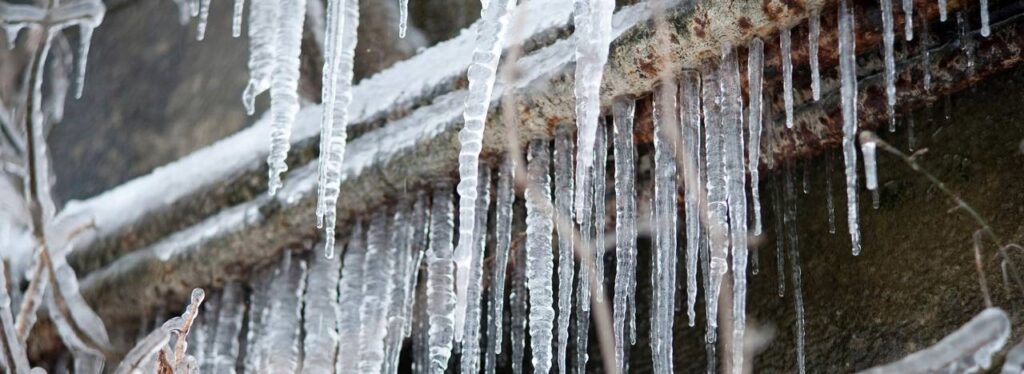Tips to Safeguard Pipes from Freezing: Specialist Advice
Tips to Safeguard Pipes from Freezing: Specialist Advice
Blog Article
They are making a number of great pointers on the subject of Prevent Frozen Pipes as a whole in the content beneath.

Winter can damage your pipes, specifically by freezing pipes. Below's how to stop it from taking place and what to do if it does.
Introduction
As temperature levels decline, the risk of frozen pipelines rises, possibly bring about expensive repair work and water damage. Recognizing exactly how to prevent frozen pipes is critical for homeowners in cold climates.
Comprehending Icy Pipes
What causes pipes to ice up?
Pipes ice up when subjected to temperature levels below 32 ° F (0 ° C) for expanded periods. As water inside the pipelines freezes, it increases, putting pressure on the pipeline walls and possibly causing them to rupture.
Dangers and problems
Icy pipes can result in water supply interruptions, building damages, and pricey repairs. Ruptured pipes can flooding homes and create considerable structural damages.
Indicators of Frozen Water Lines
Recognizing frozen pipelines early can avoid them from bursting.
Just how to determine icy pipes
Look for decreased water flow from faucets, unusual smells or noises from pipelines, and noticeable frost on exposed pipelines.
Avoidance Tips
Insulating susceptible pipes
Cover pipelines in insulation sleeves or make use of warm tape to shield them from freezing temperatures. Focus on pipelines in unheated or external areas of the home.
Home heating strategies
Maintain indoor rooms appropriately heated up, specifically locations with plumbing. Open closet doors to permit warm air to flow around pipes under sinks.
Safeguarding Outside Pipes
Garden pipes and outside taps
Disconnect and drain garden tubes prior to winter season. Install frost-proof spigots or cover outdoor taps with protected caps.
What to Do If Your Pipes Freeze
Immediate actions to take
If you think frozen pipes, keep faucets available to alleviate stress as the ice thaws. Use a hairdryer or towels taken in hot water to thaw pipelines slowly.
Long-Term Solutions
Architectural changes
Consider rerouting pipes away from outside wall surfaces or unheated areas. Include extra insulation to attics, basements, and crawl spaces.
Upgrading insulation
Purchase top quality insulation for pipelines, attics, and walls. Correct insulation assists keep constant temperatures and reduces the threat of frozen pipelines.
Conclusion
Preventing frozen pipelines requires positive measures and fast responses. By comprehending the reasons, signs, and safety nets, homeowners can shield their plumbing during winter.
6 Proven Ways to Prevent Frozen Pipes and Protect Your Home
Disconnect and Drain Garden Hoses
Before winter arrives, start by disconnecting your garden hoses and draining any remaining water. Close the shut-off valves that supply outdoor hose bibs and leave the outdoor faucet open to allow any residual water to drain. For extra protection, consider using faucet covers throughout the colder months. It’s also important to drain water from any sprinkler supply lines following the manufacturer’s directions.
Insulate Exposed Pipes
Insulating your pipes is an effective way to prevent freezing. Pipe insulation is readily available at home improvement stores and is relatively inexpensive. Pay close attention to pipes in unheated areas such as the attic, basement, crawl spaces, or garage. Apply foam insulation generously to create a buffer against the cold. You can also wrap your pipes in heat tape or thermostat-controlled heat cables for added warmth.
Seal Air Leaks
Inspect your home for any cracks or openings that could let in cold air. Seal any holes around the piping in interior or exterior walls, as well as the sill plates where your home rests on its foundation. Additionally, make sure to keep your garage door closed unless you’re entering or exiting. Leaving it open creates a significant air leak that can lead to frozen pipes.
Allow Warm Air Circulation
During cold snaps, it’s essential to allow warm air to circulate evenly throughout your home. Leave interior doors ajar to promote better airflow. Open kitchen and bathroom cabinets to help distribute heat consistently around the rooms. If you have small children or pets, be sure to remove any household chemicals or potentially harmful cleaners from open cabinets for safety.
Let Faucets Drip
A small trickle of water can make a big difference in preventing ice formation inside your pipes. When temperatures drop significantly, start a drip of water from all faucets served by exposed pipes. This continuous flow helps prevent the water from freezing. Additionally, running a few faucets slightly can relieve pressure inside the pipes, reducing the chances of a rupture if the water inside does freeze.
https://choateshvac.com/6-proven-ways-to-prevent-frozen-pipes-and-protect-your-home/

We are very excited about 6 Ways to Prevent Frozen Pipes and I really hope you liked my post. Loved our entry? Please quickly share it. Help someone else locate it. I enjoy reading our article about Preventing and dealing with frozen pipes.
Additional Information Report this page